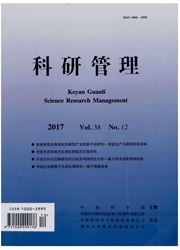

 中文摘要:
中文摘要:
本文旨在厘清汽车装配制造商的技术知识运用于零部件制造商创新中的真实作用,即探讨在不同的创新情境中的不同作用。提出两个维度作为区分不同情境的基础:零件商创造能力和创新的激进程度。交叉这两个维度得到四种创新情境,分别讨论零部件制造商在各种情境中运用装配商知识的作用。以美国汽车行业中的零部件制造商作为研究对象,以他们发布的专利作为样本,以专利数据构建变量,开展了实证研究。结果显示,只有在"能力弱的零件商开展渐进创新"情境中,运用装配商知识会对创新质量产生显著的促进作用。另外一个重要的结果是,在"能力强的零件商开展激进创新"情境中,运用越多装配制造商知识,创新质量越差;进一步探索发现,在这种情境中零件商应当从更广泛的外部来源中获取知识,并加以运用。
 英文摘要:
英文摘要:
The main purpose of this paper is, from the microcosmic view, to clarify for automobile components suppliers about the real effect of using automakers' knowledge in their innovations. I believe the effect may be different in different contexts. Two dimensions are identified to classify the context: the supplier' s capability in creation and the radical degree of the innovation. Four types of contexts for innovations are identified by integrating these 2 dimensions. Employing parts suppliers in the United States as the research subject, and applying patent data to construct variables, I examine the effects of using automakers' knowledge in different contexts. The result shows that, the automakers' knowledge plays a major role in the case of a weak supplier initiates an incremental innovation. Further, when a strong supplier initiates a radical innovation, using more automakers' knowledge will decrease his innovation quality. The result also shows that, strong suppliers cannot gain benefits by searching in narrow range, what they should do is searching knowledge broadly from other external sources.
 同期刊论文项目
同期刊论文项目
 同项目期刊论文
同项目期刊论文
 期刊信息
期刊信息
